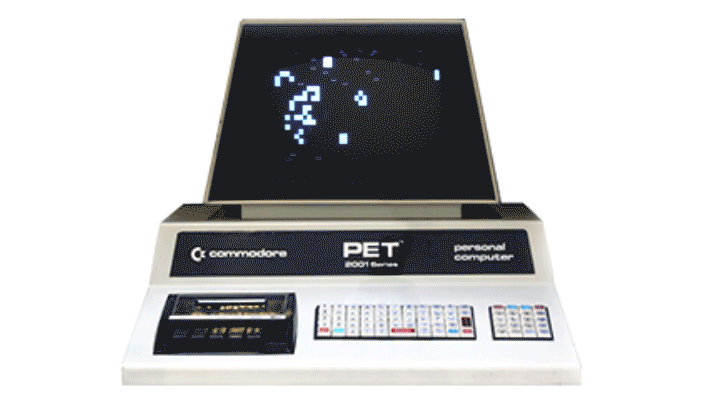
The Blue Plate: (The Machine Stops), 2015-16
A chalkboard containing the code for "Conway's Game of Life". A series of interactive computer animations, controlled by Leap Motion, two computer animations running on iMacs G3s, A Commodore Pet running a simulation of “Conway’s Game of Life”. Developed using Unity, After Effects, Maya, & Leap Motion. Contains excerpts from: Sketchpad (1963), Pantomation (1977), Xerox Mockingbird (1980), Put That There (1980), MAGI Synthavision Demo Reel (1980), Image West Demo Reel (1981), Blit Terminal (1982), Shirogumi Sample Reel (1983), Mandala (1983), The Bicycle Company (1984) Wonder Works (1984), Martian Magnolia (1984), Eurythmy Motion Studies (1985), Sogitec Showreel (1985), Intelligent Light (1985), Japan Computer Graphics Lab (1985), Deja Vu (1987), Locomotion Studies - MIT - (Karl Sims) (1987), Mental Images (1987).
#consumer electronics #gaming #human-machine interaction #learning #storytelling #interfaces #machine learning #affective computing #ethics #industry #interactive #computer science #interfaces #learning #entertainment #art #artificial intelligence #design #creativity #history #technology #archives
The immersive exhibit The Blue Plate (The Machine Stops) is a spatial narrative, connecting three otherwise disparate landmark moments in the history of modern computing media. An adaptation of a short story from 1909, The Machine Stops by E.M. Forster,
the story is considered prescient for its prediction of telecommunications and digital technology.
The story of The Machine Stops was displayed spatially by using a variety of historical computing hardware, each representing a milestone in the advancement of “personal computing” into its status as a fixture in everyday life. The story’s characters were animated by reconstructing and reanimating early three-dimensional models of the computer-generated human body.
In 1909, noted queer author E.M.
Forster published The Machine Stops, predicting a future where all humans live in quarantine from one another. This project was inspired by the name of the “wireless” device imagined in Forster’s story, a sort of “portal” described as a “blue plate”.
For Forster’s future to be realized, a century of evolution in artificial life, computer-generated human bodies, and the advent of the personal computer would be required.
In the 1950s, the idea of “artificial life” was originally conceived of by Nils Barricelli, lost for ages in shoeboxes of punch cards.
In 1970, John Conway developed the code for the “Game of Life”, the first “cellular automata”.
In 1972, the world’s first computer-animated three-dimensional human face and human hand were rendered by Ed Catmull and Fred Parke, in a short film titled A Computer Animated Hand.
In the late 70s, computing became mainstream, as the Commodore Pet revolutionized the idea of the “Personal Computer”, soon to become mainstream by the rapid spread of the Apple Macintosh in 1984.
A Commodore Pet ran “Conway’s Game of Life”, the code of which was written in chalk on a large chalkboard, surrounded by ephemera about Barricelli’s work on “digital life”. A Mac Plus had the full narrative in a HyperCard application.






Storytelling through Multimedia
I collected public domain 2D animations comprising a geneology of CGI from 1963 to 1987, and used fragments of the animations to create a 3D environment for storytelling.

Ed Catmull’s 3D hand and Fred Parke’s 3D face were re-created in contemporary 3D software, and re-animated in an interactive 3D narrative environment.
Interacting in a 3D Timeline
Users explored a chronology of CGI history by retargeting their hand gestures via a Leap Motion Controller onto Catmulls’ “hand”.
The dialogue of the story was told by two bookended iMac G3 monitors, each animated by Parke’s faces, re-animated with the original Apple text-to-speech engine, “MacinTalk”.

A Spatial Narrative on Hardware
Using media artifacts with contemporary technology, the story of “The Machine Stops” was told through the medium of media archaeology.
An Animation Documenting an Example of the User Experience using a Leap Motion Controller
Adapted Screenplay from "The Machine Stops".
Full Project Overview
3D Stereo Conversion
When displayed on a stereoscopic 3D display, the interactive animation is also rendered as "3D".
Interestingly, this process involves extracting 2D content from originally 3D animated projects, placing them in 3D space, and using modern stereoscopy to allow them to become "three-dimensional" again.













